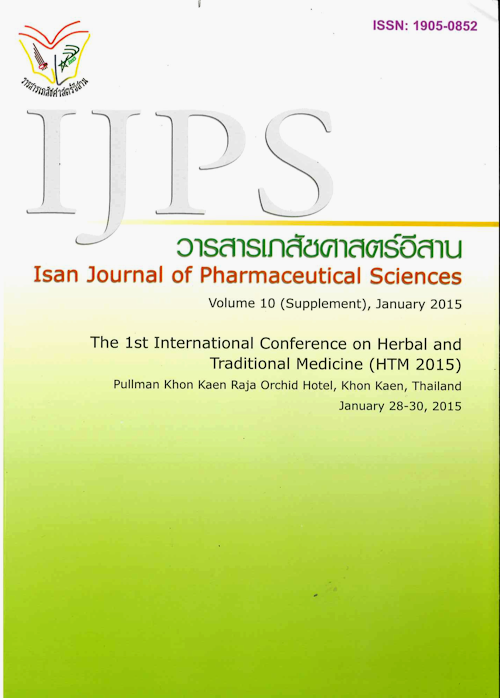Effect of Passifl ora foetida on Abnormal Locomotion in MPTP Induced Parkinson-Like Behavior in Mice
Main Article Content
Abstract
region around the world. In Vietnamese folk medicine, dry leaves are used for sleeping disorder.
Other pharmacological activities of this plant have been studied. Relieving abnormal motility in Parkinson-
like disease is one of interest. Methods: Parkinsonism by 15 mg/kg MPTP (1-methyl-4-phenyl-1,
2, 3, 6-tetrahydropyridine) was performed in C57BL/6 mice. Chronic MPTP injections were administered
for 6 weeks. Three main unusual characteristics in these mice were determined using force plate
actimeter (FPA). Results: Lower number of distance of travelling, higher number of bout of low
mobility (BLM), and higher intensity of peaks power spectra at specifi c frequencies of 9-11 Hz. were
found in MPTP mice. 200 mg/kg passion, a granule suspension form of passionfl ower, signifi cantly
reduced the action of MPTP in distance of travelling, bout of low mobility, and power spectra, as well
as sinemet did. Conclusion: This study suggests that the effect of P. foetida on relieving Parkinson’s
symptoms in mice possibly relate dopaminergic pathway. Therefore, the dopamine levels in the brain
of mice treated with P. foetida need to be evaluated in the further study.
Article Details
In the case that some parts are used by others The author must Confirm that obtaining permission to use some of the original authors. And must attach evidence That the permission has been included
References
Avula B, Wang YH, Rumalla CS, Smillie TJ, Khan IA. Simultaneous determination of alkaloid sand flavonoids from aerial parts of Pas-siflora species and dietary supplements using UPLC-UV-MS and HPTLC. Nat Prod Commun. 2012; 7(9): 1177-80.
Fowler SC. Behavioral Spectroscopy with the Force-Plate Actometer. Current Separations. 2002; 20(1): 17-22.
Gelb DJ, Oliver E, Gilman S. Diagnostic criteria for Parkinson disease. Arch Neurol.1999; 56(1):33-9.
Moon JH, Kim JH, Im HJ, Lee DS, Park EJ, Song K, Oh HJ, Hyun SB, Kang SC, Kim H, Moon HE, Park HW, Lee HJ, Kim EJ, Kim S, Lee BC, Paek SH. Proposed Motor Scoring System in a Porcine Model of Parkinson’s Disease induced by Chronic Subcutaneous Injection of MPTP. Exp Neurobiol. 2014; 23(3): 258-65.
Serrano-Duenas M, Cardozo-Pelae Z, Sanchez-Ramos JR. Effects of Banisteriopsis capiextract on Parkinson’s disease. The Sci Rev of Altern Med. 2001; 5: 127-132.
Splettstoesser F, Bonnet U, Wiemann M, Bingmann D, Busselberg D. Modulation of voltage-gated channel currents by harmaline and harmane. Br J Pharmacol. 2005; 144(1): 52-8.
Terzioglu M, Galter D. Parkinson’s disease: genetic versus toxin-induced rodent models. FEBS J. 2008; 275(7): 1384-91.


